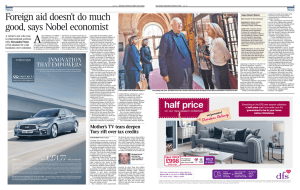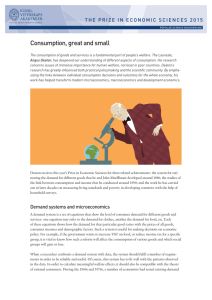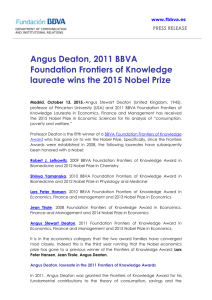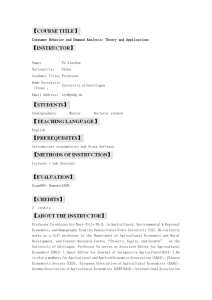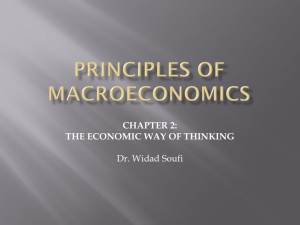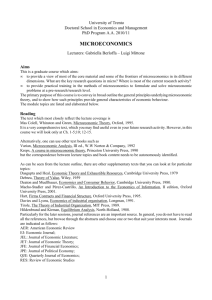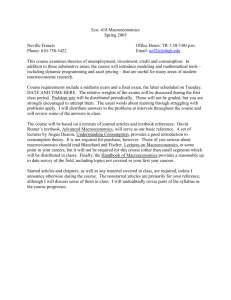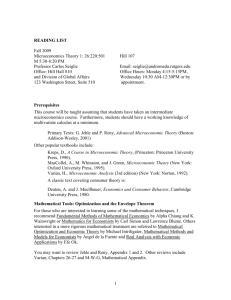THE ECONOMIST Free exchange Reality cheque Angus Deaton
advertisement
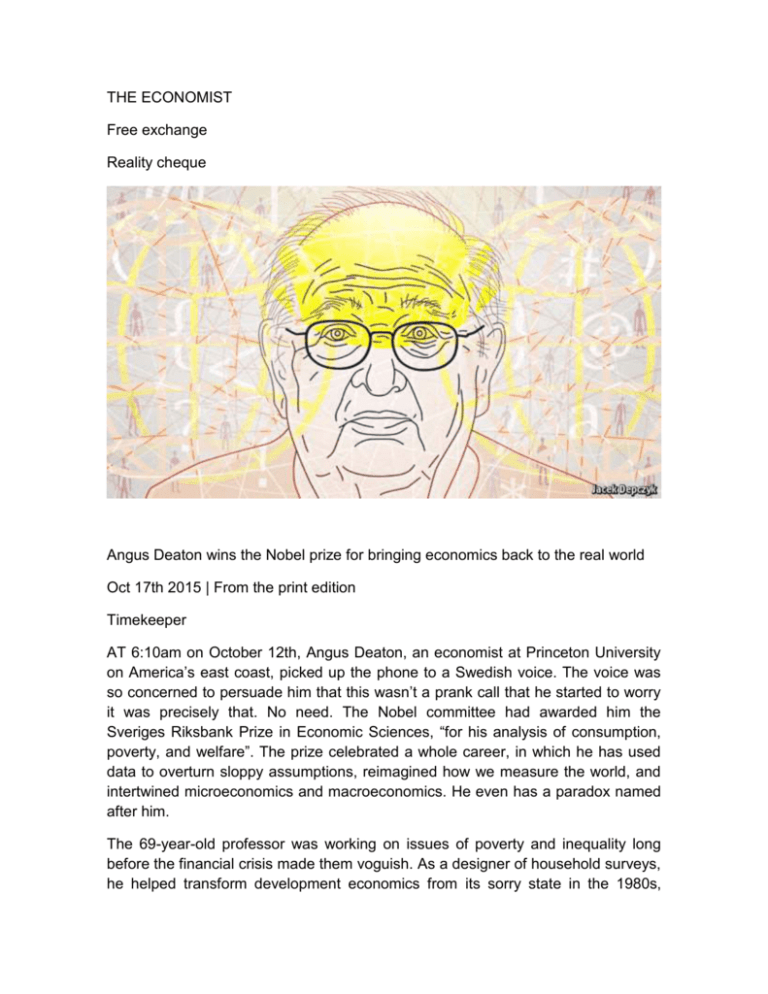
THE ECONOMIST Free exchange Reality cheque Angus Deaton wins the Nobel prize for bringing economics back to the real world Oct 17th 2015 | From the print edition Timekeeper AT 6:10am on October 12th, Angus Deaton, an economist at Princeton University on America’s east coast, picked up the phone to a Swedish voice. The voice was so concerned to persuade him that this wasn’t a prank call that he started to worry it was precisely that. No need. The Nobel committee had awarded him the Sveriges Riksbank Prize in Economic Sciences, “for his analysis of consumption, poverty, and welfare”. The prize celebrated a whole career, in which he has used data to overturn sloppy assumptions, reimagined how we measure the world, and intertwined microeconomics and macroeconomics. He even has a paradox named after him. The 69-year-old professor was working on issues of poverty and inequality long before the financial crisis made them voguish. As a designer of household surveys, he helped transform development economics from its sorry state in the 1980s, when it was stuck in a rut of murky data and unverifiable theories. He has explored how much more the poor eat when they get more income, how well insured they are when their earnings shrivel and, more broadly, the relationship between health and income growth. His thinking on the topic of inequality is typically textured. He frames it as a product of success—for there to be have-nots, there must be haves—but he is not a cheerleader for the elite. Rather, he thinks that digging into the data reveals how to help the millions of people who have been left behind to catch up. Although his work on inequality may grab most attention, the Nobel committee also highlighted a couple of his earlier, more wonky contributions. The first was for his work in transforming the way economists estimate demand. Knowing how people respond to price changes is crucial to understanding the effects of governments tweaking taxes, supermarkets promoting products, and the like. Before Mr Deaton arrived on the scene, economists used simple models that made rigid assumptions about people’s consumption patterns. But upon closer inspection, it turned out that the assumptions in these models were inconsistent with real-life data on how people respond to changes in prices. Mr Deaton swooped to the rescue. He suggested that the old models might have failed because their assumptions were too severe. Along with a colleague, John Muellbauer, he proposed a new way of modelling the problem. Their modestly named “Almost Ideal Demand (AID) System” had the beauty of being simple to estimate, but without the rigid assumptions that were the undoing of the old methods. For example, in earlier models, demand was assumed to increase in lock-step with income, regardless of how rich the person was. The new approach allowed for different responses according to the level of income, so that a 1% pay boost might raise porridge demand by 2% for a pauper, but only 0.1% for a prince. The much-cited paper in which Messrs Deaton and Muellbauer laid out their approach has spawned a family of extensions, devised by other economists. For all its successes, however, the pair have been among the model’s harshest critics— as hinted in its name, they had not intended to provide “the” answer but to guide future research. The second achievement highlighted by the Nobel committee was Mr Deaton’s help in bridging the gap between macroeconomics and microeconomics—and in particular in understanding the relationship between consumption and income. This relationship is crucial. The difference between the two is the level of savings; in turn, savings determine how much an economy invests and ultimately society’s future wealth. Before Mr Deaton came along, macroeconomists used models of individual behaviour to explain, why, in aggregate, consumption seemed less volatile than income. One such attempt was Milton Friedman’s “permanent income hypothesis”, which supposed that people smooth consumption when they face temporary jolts to their income. In response to a one-off pay bump, this theory predicted that people would put aside some of the extra cash for a rainier day. That idea tallied nicely with the observation that in aggregate consumption looked smoother than income. Milton’s paradigm lost But Mr Deaton’s work exposed this as sloppy thinking. First, he noted that the relationship between consumption and income in Friedman’s model depended on the kinds of income shocks hitting an economy. If one pay rise acts as a signal that there are more to come, then the “rational” agent in Mr Friedman’s model should anticipate future increases, and spend even more than their initial income boost. In this case, consumption should be more volatile than income, not the other way round. So indeed it proved. Mr Deaton examined the aggregate income data more carefully, and found that it did not seem to support the idea of consumption smoothing. His microeconomic theory, allied with his empirical observations about aggregate income, together implied that income should be smoother than consumption, in contrast to what the macroeconomists had been trying to explain in the first place. This inconsistency was the Deaton paradox. As well as his specific contributions to our understanding of the world, Mr Deaton offers three lessons to aspiring economists. First, the theory should tally with the data—but if not, then do not despair. Puzzles and inconsistencies help to prompt innovation. Second, the average is rarely good enough. It is only by understanding differences between people that we can understand the whole. Finally, measurement matters. In the words of Mr Deaton, “progress cannot be coherently discussed without definitions and supporting evidence”. In the words of Mr Muellbauer, Mr Deaton’s win is “a triumph for evidence-based economics”. Visit our Free exchange economics blog From the print edition: Finance and economics
